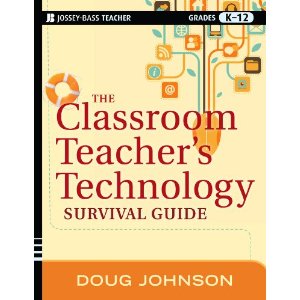Power of Parents
The Power of Parents
Head for the Edge, November 2006
In most communities, parents have choices of where to send their children to school. Right here in Podunk, Minnesota, parents can:
- Enroll their children in any public school throughout the state.
- Register their high school students in a college through the state’s post secondary enrollment option.
- Enroll their children in a variety of excellent private/parochial schools.
- Enroll their children in a growing number of public charter schools.
- Enroll their children in a virtual school.
- Home school their children. (Well, for some parents that’s an option. I dearly love my own children, but…)
The reality is that today’s parents have as many choices of schools as they do fast food restaurants. And choice gives parents power. Administrators understand that parents, not children, are the education system’s true customers, and that customers can and do vote with their feet. If parents’ expectations are not met, they will pull their children and all those lovely state aid dollars that come with them out of the displeasing school and into another educational venue. As a result, administrators are listening more carefully to parents now than they ever have in the past.
Wouldn’t it be nice if parents would share this power with library media specialists, adding their voices in support of strong library programs? Actually they will and are delighted to do so, but not without some conscious effort on the part of the library media specialist. Here are a few ways I’ve seen clever LMSs harness the power of parents:
1. Use parent volunteers whenever possible.
We often look at parent volunteers as a source of “free” labor, but these workers, when treated with respect, develop a sense of ownership in the library and library program. Cultivate your volunteer program by giving parents not just routine tasks to do like reshelving materials, but challenging, meaningful jobs like conducting story times, creating displays, and working-one-on-one with students. Do your volunteers have any special interests or talents that can be harnessed? We’ve had amazing parent artists paint murals on our library walls.
2. Include parent representation on library advisory committees.
(See http://www.doug-johnson.com/dougwri/advice.html) An active library advisory committee must include parent representatives. Administrators read plans, budgets and policies coming from groups with parent representatives carefully.
3. Work closely with parent-teacher organizations.
Savvy LMSs attend PTO/PTA meetings, participate in their events, and help with fund-raisers. We need to help such organizations meet their goals as well as getting help from them to meet ours. While many LMSs know to go to the PTO for funds, we sometimes forget that the members of these groups are very influential among all parents and in the community. (If you’re going to suck up, this is the place to do it.) The best gift that PTOs can give libraries is not money, but support and influence – especially in times of budget crisis.
4. Grab the attention of parents during open houses and parent-teacher conferences.
Special displays, events, or even the presence of the coffee pot will get parents in the door of the media center during times parents are in the building. Is a sign up sheet listing a variety of ways they might get more involved in the library as volunteers available? Is there a bulletin board or a multimedia presentation showing the cool things students are doing in the LMC clearly visible? Do you have brochures about your program that can be distributed?
5. Allow parents to check out materials for use with their children at home.
Make it clear that parents are welcome to use the resources of the library themselves. Not every community has a good children’s collection at its public library and many parents appreciate books that can be taken home to share with their children. I’ve always made sure parents know that they can use computers or other equipment outside of school hours as well.
6. Take the “library program” to the parents (and community).
“If only people would visit and see what actually goes on in the library, they would understand its value!” A sentiment I hear often. A short video showcasing the library and students actively using it can have the same impact. It’s portable and available anytime there is the chance to meet with parents or community groups. Invest the time in making one.
7. Establish a formal and regular means of home/school communication.
A more passive form of “participation” is just making sure all parents know what positive activities, events and resources are a part of the library program. Every school newsletter going home to parents needs a library page illustrated with digital photos of happy, library-using kids that educates parents about what is happening in your program. Check David Loertcher’s State Power series <http://www.lmcsource.com/tech/state.html>. These amazing booklets, designed for individual states, are a ready-made compendium of “one-page messages” to share with parents.
I am haunted by a comment made by a school board member in a neighboring district a couple years ago who asked why parents weren’t objecting to media staffing cuts that had been proposed. If a school board cuts a sport, reduces a special education service, or increases a class size, parents turn out in droves. Parents should show up to object when library cuts are proposed as well. But they won’t do it unless we cultivate the relationship.






Reader Comments (1)
Designs by a parent / advocate to help parentsm advocates and others promote acceptence of diversity and inclusion in schools and community.